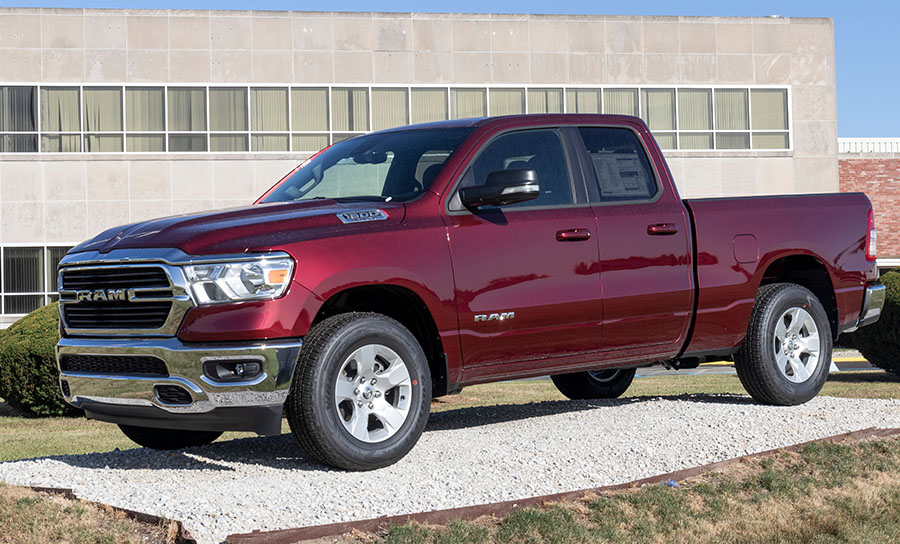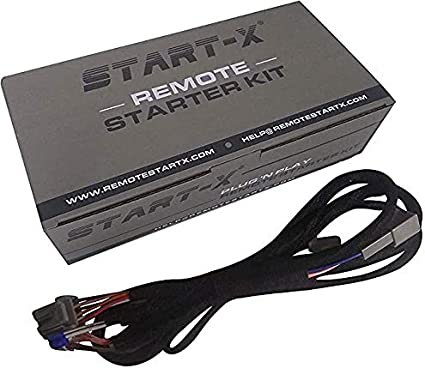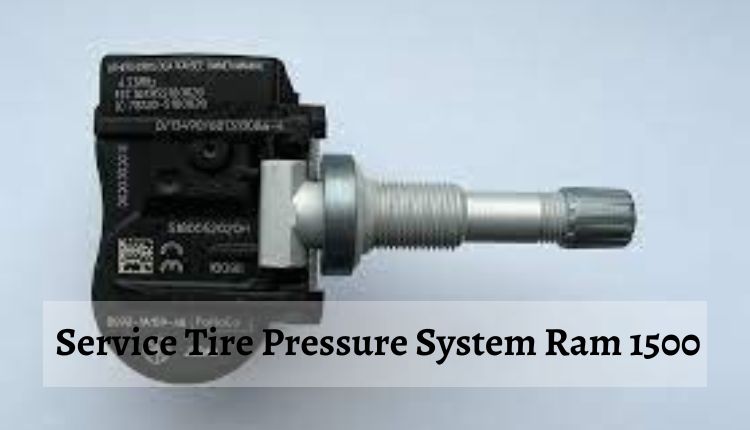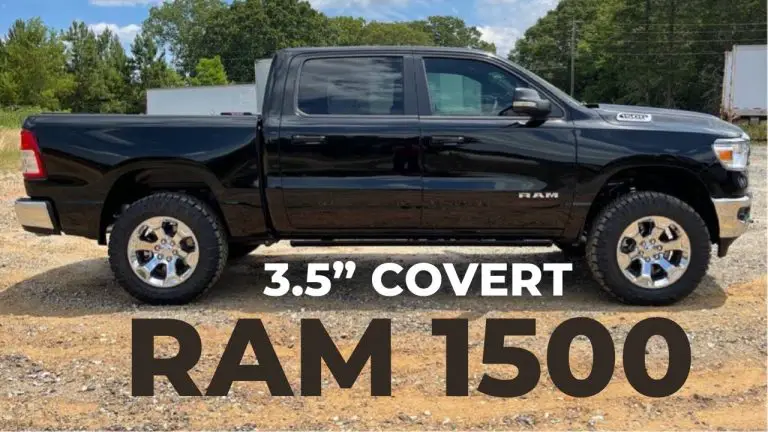Ram 1500 Vibration at Highway Speeds
Experiencing vibration at highway speeds in your Ram 1500 can be both annoying and potentially dangerous. To resolve this issue, start by inspecting your tires and wheels for proper balance, alignment, and wear.
Additionally, examine the drivetrain components, such as U-joints, driveshaft, and transmission mounts, for any signs of damage or wear. Finally, assess your suspension system’s shock absorbers, struts, and bushings to ensure optimal performance.
By identifying the source of the vibration and addressing it through regular maintenance and high-quality components, you can enjoy a smooth, safe ride in your Ram 1500.
The Ram 1500 is a popular full-size pickup truck known for its durability, performance, and comfort. With a powerful engine lineup, advanced technology features, and a comfortable cabin, it has become a go-to choice for truck enthusiasts and professionals alike.
Despite its impressive characteristics, some owners have reported experiencing vibration at highway speeds.
Common Issue: Vibration at Highway Speeds
Vibration at highway speeds can be a concerning issue for Ram 1500 owners. This problem not only affects driving comfort but can also be indicative of underlying issues that could potentially lead to more significant damage or safety hazards.
Identifying and resolving these vibrations is essential for maintaining the performance and longevity of your Ram 1500.
Related Article: Exhaust Manifold Gasket Replacement
Importance of Addressing the Problem
Addressing vibrations at highway speeds in your Ram 1500 is crucial for several reasons. First, it enhances the overall driving experience by providing a smoother and more comfortable ride.
Second, it ensures the safety of the vehicle and its occupants, as unresolved vibrations can result in handling difficulties or escalate into more severe issues. Lastly, fixing these problems helps maintain the value and performance of your truck, ensuring a more enjoyable and reliable driving experience.
This Dodge Ram 1500 has a vibration mystery symptom. Will these parts fix it?
Identifying the Source of Vibration
Tires and Wheels
One of the primary causes of vibration at highway speeds in a Ram 1500 can be attributed to issues with the tires and wheels. These components are crucial for maintaining a smooth and stable ride, and problems with them can lead to noticeable vibrations.
Tire Balance
An improperly balanced tire can cause uneven weight distribution, leading to vibration at higher speeds. Balancing tires ensures that weight is distributed evenly across each tire, helping to minimize vibrations.
Wheel Alignment
Misaligned wheels can also contribute to vibrations at highway speeds. Proper wheel alignment ensures that your tires make optimal contact with the road, providing a smooth and stable ride.
Tire Wear
Uneven or excessive tire wear can lead to vibrations as well. Inspecting your tires for wear patterns, such as cupping or feathering, can help identify the cause of the issue.
Drivetrain
The drivetrain components of your Ram 1500 are responsible for transferring power from the engine to the wheels. Issues with these components can cause vibrations at highway speeds.
U-joints
Universal joints (U-joints) are essential for connecting the driveshaft to the vehicle’s transmission and rear axle. Worn or damaged U-joints can cause vibrations, especially at higher speeds.
Driveshaft
The driveshaft is responsible for transmitting torque from the transmission to the rear axle. An imbalanced or damaged driveshaft can lead to noticeable vibrations while driving.
Transmission Mount
A worn or damaged transmission mount can cause the transmission to shift out of its proper position, leading to vibrations at highway speeds.
Suspension Components
The suspension system in your Ram 1500 plays a critical role in providing a smooth and comfortable ride. Problems with suspension components can contribute to vibrations at highway speeds.
Shock Absorbers
Worn or damaged shock absorbers can cause excessive bouncing and vibrations while driving. Inspecting and replacing worn shocks can help alleviate these issues.
Struts
Struts, which combine the shock absorber and spring in one unit, can also contribute to vibrations if they are worn or damaged. Replacing worn struts can improve the
Bushings
Suspension bushings help reduce friction between various suspension components. Worn or damaged bushings can cause vibrations and excessive noise while driving. Inspecting and replacing worn bushings can help address these issues.
- Ram 1500 Bilstein 5100 Before And After
- Dodge Ram 1500 Rear End Noise
Solutions for Vibration Issues
Once the source of the vibration has been identified, it’s essential to address it to restore your Ram 1500’s smooth and comfortable ride. Implementing the following solutions can help eliminate vibrations at highway speeds.
Tire and Wheel Maintenance
Regular tire and wheel maintenance can prevent and resolve vibration issues related to these components.
Balancing and Rotating Tires
Regularly balancing and rotating your tires can help ensure even weight distribution and wear, minimizing the likelihood of experiencing vibrations at highway speeds. Most experts recommend having your tires balanced and rotated every 5,000 to 7,500 miles.
Wheel Alignment
Having your wheels aligned by a professional can help maintain optimal contact between your tires and the road, reducing the chance of vibrations. It’s generally recommended to have your wheel alignment checked every 12,000 to 15,000 miles or at least once a year.
Inspecting and Replacing Worn Tires
Regularly inspecting your tires for signs of uneven or excessive wear is essential in preventing vibrations. Replacing worn tires with new, high-quality ones can help maintain a smooth and stable ride.
Drivetrain Maintenance
Addressing drivetrain issues can help eliminate vibrations related to these components.
Checking and Lubricating U-joints
Inspecting your U-joints for wear and ensuring they are properly lubricated can help prevent vibrations caused by these components. Most manufacturers recommend lubricating U-joints every 5,000 miles or during each oil change.
Inspecting and Replacing Driveshaft Components
Regularly checking your driveshaft for signs of damage or imbalance can help maintain a smooth ride. If any issues are found, it may be necessary to have the driveshaft balanced or replaced to eliminate vibrations.
Assessing Transmission Mount Health
Inspecting your transmission mount for signs of wear or damage is essential in preventing vibrations caused by shifting transmission components. If issues are found, replacing the transmission mount can help restore stability and reduce vibrations.
Suspension System Maintenance
Maintaining your Ram 1500 suspension system can help address vibrations related to these components.
Replacing Worn Shock Absorbers
Inspecting and replacing worn shock absorbers can help maintain a smooth and comfortable ride. Most shock absorbers have a lifespan of around 50,000 miles, but this can vary depending on driving conditions and usage.
Inspecting and Replacing Struts
Regularly checking your struts for signs of wear or damage is essential in preventing vibrations. If issues are found, replacing the struts can help restore a smooth ride and minimize vibrations.
Upgrading Bushings
Inspecting and replacing worn suspension bushings can help reduce friction between suspension components, leading to a smoother ride and reduced vibrations. In some cases, upgrading to high-quality aftermarket bushings can further improve ride quality and durability.
Preventive Measures
Taking preventive measures can help reduce the likelihood of experiencing vibrations at highway speeds in your Ram 1500. Implementing the following practices can help maintain a smooth and comfortable ride while prolonging the life of your vehicle.
Regular Vehicle Inspections
Conducting regular vehicle inspections, including checking the tires, wheels, drivetrain, and suspension components, can help identify potential issues before they escalate into more severe problems. By addressing these concerns early on, you can prevent vibrations and maintain a comfortable driving experience.
Adhering to Maintenance Schedules
Following the manufacturer’s recommended maintenance schedules for your Ram 1500 is crucial in preventing vibrations and ensuring optimal performance. Regular maintenance, such as oil changes, tire rotations, and wheel alignments, can help keep your vehicle in top shape and minimize the risk of experiencing vibrations at highway speeds.
Investing in Quality Components
When replacing worn or damaged components, investing in high-quality parts can help ensure a smoother and more durable ride. High-quality components are often more resistant to wear and provide improved performance, reducing the likelihood of experiencing vibrations in your Ram 1500.

Credit: www.wheelsjoint.com
FAQs
How often should I rotate and balance my tires to prevent vibrations?
Most experts recommend rotating and balancing your tires every 5,000 to 7,500 miles to minimize vibrations and ensure even wear.
Can worn suspension components cause vibrations at highway speeds?
Yes, worn or damaged suspension components, such as shock absorbers, struts, and bushings, can contribute to vibrations while driving at highway speeds.
What signs should I look for when inspecting my drivetrain components for potential vibration issues?
Check for any signs of wear, damage, or imbalances in your U-joints, driveshaft, and transmission mount. Addressing these issues can help eliminate vibrations related to the drivetrain.
How often should I have my wheel alignment checked?
It’s generally recommended to have your wheel alignment checked every 12,000 to 15,000 miles or at least once a year to prevent vibrations and uneven tire wear.
Can upgrading to high-quality aftermarket components help reduce vibrations in my Ram 1500?
Yes, investing in high-quality aftermarket components, such as bushings and shocks, can help improve ride quality, and durability, and reduce vibrations in your Ram 1500.
Vibration At Higher Speeds – Found & Fixed
Conclusion
Recap of Solutions for Ram 1500 Vibration at Highway Speeds
To eliminate vibrations at highway speeds in your Ram 1500, it’s essential to identify and address the root cause of the issue, whether it’s related to tires, wheels, drivetrain components, or suspension.
Implementing regular maintenance practices, adhering to recommended schedules, and investing in high-quality components can help maintain a smooth and comfortable ride.
Emphasizing the Importance of Regular Maintenance
Regular maintenance is crucial for ensuring the longevity and performance of your Ram 1500. By addressing potential issues before they become more severe, you can prevent vibrations at highway speeds, enhance driving comfort,
And ensure the safety of your vehicle and its occupants. By prioritizing your truck’s maintenance, you can enjoy a more enjoyable and reliable driving experience.
See Also:
- Ram Etorque Battery Replacement Cost
- Ram Brake Controller Not Recognizing Trailer
- Ram 5Th Wheel Prep Package Install Problems and Solutions
- Ram 1500 With 285 65R20 All Problems and Solutions
- Ram 1500 Traction Control Light on







